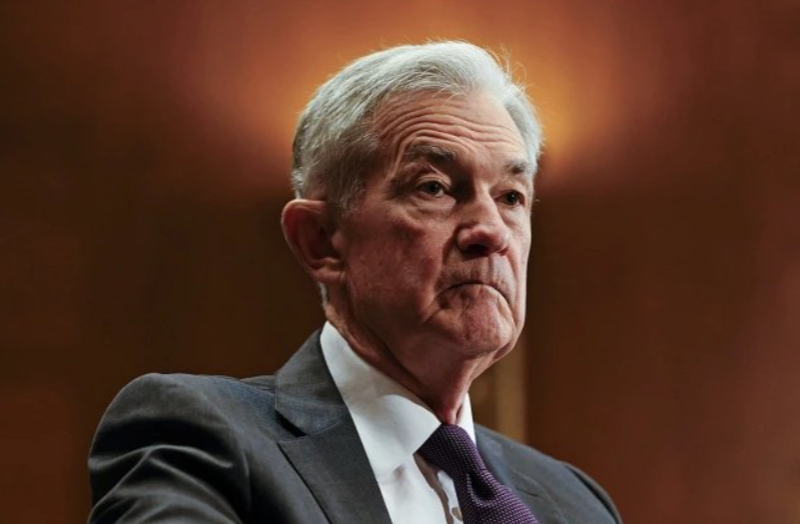Amid falling U.S. Treasury yields and growing speculation over Jerome Powell’s future, BlackRock CIO Rick Rieder delivers a bold outlook on FED policy, calling for deeper rate cuts to support struggling households and smaller businesses. He warns that while short-term inflation may rise from tariffs, long-term trends in technology and productivity will reshape the economy. With job growth slowing, consumer spending divided between rich and poor, and President Trump openly searching for Powell’s replacement, the direction of FED policy could mark a historic turning point for markets, employment, and global finance.
Rick Rieder on FED Policy, Powell’s Future, and Market Risks
The U.S. bond market is once again at the center of global financial discussions, with yields having dropped nearly 50 basis points since the start of the year. Against this backdrop, Federal Reserve Chair Jerome Powell faces increasing scrutiny, not only over his policy stance but also his position at the central bank, as President Donald Trump publicly considers potential replacements. One of the names floated for this role is Rick Rieder, BlackRock’s Chief Investment Officer of Global Fixed Income and Head of the Global Allocation team.

In a recent interview, Rieder shed light on the Fed policy outlook, the risks in the economy, and his own perspective on whether rates need to come down more aggressively.
Inflation Concerns and the Fed’s Balancing Act
When asked about Powell’s potential message in upcoming remarks, Rieder pointed out that the Fed Policy remains concerned about inflation but emphasized that it is not as alarming as many believe. “Inflation is running at around 2.8%, which is elevated but still manageable,” he noted. According to him, the central bank is in a good position to act, and while a September rate cut is uncertain, the Fed could opt for deeper and faster cuts going forward.
Rieder argued that the economy is fundamentally well-placed for such adjustments. He highlighted that the Fed funds rate, currently high relative to inflation break-evens, suggests that there is room to cut by as much as 100 basis points without risking overheating. “We don’t need to be sitting at 4% or 3%. They could go 50 basis points now and still be closer to the right pricing,” he explained.
Labor Market Weakness and the Case for Aggressive Cuts
The debate over employment remains central to the Fed Policy decision-making. Recent minutes from the Fed’s July 29–30 meeting revealed an unusual split, with two dissenting members pushing for rate cuts — the first time in decades such a divide has emerged. The discussion pointed to slowing job growth, with the three-month moving average showing only 34,000 jobs per month. Strikingly, if healthcare jobs were excluded, employment growth would actually be negative.
Rieder underscored that this weakness in the labor market strengthens the case for more aggressive policy moves. “Job openings and hirings are slowing, and the velocity of labor is coming down significantly,” he said. This, in his view, adds to the urgency of providing monetary relief.
Short-Term Inflation Pressures Versus Long-Term Trends
One of the pressing questions for the Fed Policy is whether tariff-related price pressures will push inflation higher in the near term. Rieder acknowledged that certain sectors, such as electronics, have already seen some price elevation due to tariffs. However, he believes these effects are transitory. “Even with tariffs, inflation remains under 3%. Over the intermediate term, productivity, technology, and innovation will fundamentally reshape price dynamics,” he said.
He cautioned that while companies like Estée Lauder have indicated growth elasticity and potential price pressures, technological advances are likely to mitigate these concerns over time. The bigger issue, according to Rieder, is not inflation but employment and the distribution of economic growth.
Uneven Economic Impact of Interest Rates
Rieder highlighted that while consumer spending remains strong overall, the benefits of the current economic environment are not evenly shared. High-income households, many of whom benefit from higher interest income on savings, continue to spend robustly, supporting overall consumption. In contrast, lower-income households are struggling under the weight of borrowing costs.
He pointed out that large corporations, particularly the so-called “Magnificent Seven” tech giants, have a combined net interest income of $9 billion and are relatively insulated from high borrowing costs. Smaller and mid-sized companies, however, rely heavily on borrowing and are feeling the squeeze. Similarly, the housing market and the U.S. government, both dependent on debt financing, are under pressure from elevated rates. “There is no reason to keep rates this high.
The current policy favors older, wealthier households with cash reserves, while younger and lower-income Americans are facing real challenges,” Rieder said.
The 10-Year Yield, Market Pricing, and Powell’s Dilemma
Despite the Fed policy holding rates steady, both the 10-year and 5-year Treasury yields have dropped more than 50 basis points since January. Rieder has previously expressed a preference for the “belly” of the curve — particularly the 5-year note — and maintains that these movements reflect misplaced expectations about where rates should be.
He warned that businesses like Home Depot have signaled that prices could rise in the second half of the year as companies pass along costs they have previously absorbed. Still, he maintained that market pricing is wrong to assume higher long-term inflation and that the Fed should align policy more closely with economic realities.
Trump’s Search for Powell’s Replacement
Adding another layer of intrigue to Fed policy discussions is the political question of Powell’s future. President Trump has openly explored potential replacements, and Rick Rieder’s name has surfaced as one of the possible candidates. When asked about the speculation, Rieder did not dismiss the possibility. “To be considered for a position like that is an incredible honor. The ability to influence monetary policy and economic transmission is a powerful dynamic,” he said.
Although he refrained from confirming whether he would accept the role if offered, Rieder emphasized his strong belief in lowering rates to support low- and middle-income Americans, who represent nearly half of the population. “This is not about a small 4% cohort. It’s about creating a fairer environment for the broader economy,” he remarked.
Conclusion
As markets digest Powell’s latest moves and brace for potential changes in Fed policy leadership, voices like Rick Rieder’s underscore the challenges ahead. With inflation moderating, job growth slowing, and consumption patterns showing clear divides across income groups, the case for lower rates is gaining momentum. Whether Powell stays on or a successor like Rieder takes the helm, the central bank faces the delicate task of balancing inflation risks with the need to support broader economic stability.Fed policy

